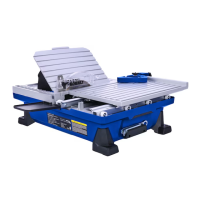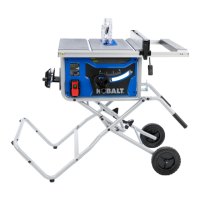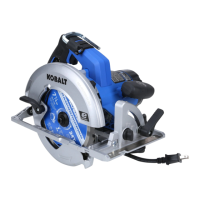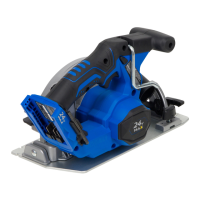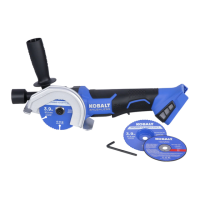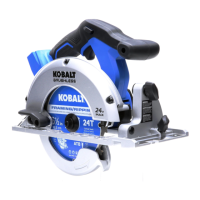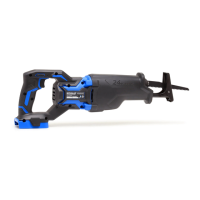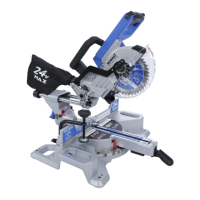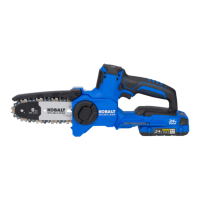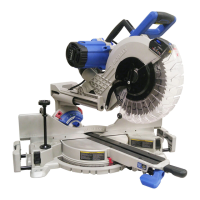9
SAFETY INFORMATION
kobalttools.com
USE DUST MASK
Some dust created by sawing contains chemicals that are known to cause cancer, birth defects
or other reproductive harm. Some examples of these chemicals come from lead-based paints,
crystalline silica from bricks, cement and other masonry products, arsenic and chromium from
chemically treated lumber. To reduce exposure to these chemicals, work in a well-ventilated area with
approved safety equipment, such as dust masks that are specially designed to lter out microscopic
particles.
POSITION OF TILE SAW
• To avoid the possibility of the appliance plug or
receptacle getting wet, position tile saw to one side
of a wall-mounted receptacle to prevent water from
dripping onto the receptacle or plug. The user should
arrange a "drip loop" in the cord connecting the saw
to a receptacle. The "drip loop" is the part of the cord
below the level of the receptacle, or the connector if an
extension cord is used, to prevent water traveling along
the cord and coming into contact with the receptacle.
• If the plug or receptacle does get wet, DO NOT unplug
the cord. Disconnect the fuse or circuit breaker that
supplies power to the tool. Then unplug and examine for
presence of water in the receptacle.
ELECTRICAL SAFETY
CAUTION
In all cases, verify that the outlet in question is properly grounded. If you are not sure, have a licensed
electrician check the outlet.
GROUNDING INSTRUCTIONS
In the event of a malfunction or breakdown, grounding provides
a path of least resistance for electric current to reduce the risk of
electric shock. This tool is equipped with an electric cord that has
an equipment-grounding conductor and a grounding plug. The plug
must be plugged into a matching outlet that is properly installed
and grounded in accordance with all local codes and ordinances.
DO NOT modify the plug provided. If it will not t the outlet, have
the proper outlet installed by a qualied electrician.
Improper connection of the equipment-grounding conductor can
result in a risk of electric shock. The conductor with a green outer
surface, with or without yellow stripes, is the equipment-grounding
conductor. If repair or replacement of the electric cord or plug is necessary, DO NOT connect the
equipment-grounding conductor to a live terminal. Check with a qualied electrician or service
technician if the grounding instructions are not completely understood, or if in doubt as to whether the
tool is properly grounded. Use only three-wire extension cords that have three-prong grounding plugs
and three-pole receptacles that accept the tool’s plug, as shown. Repair or replace a damaged or
worn cord immediately.
Drip loop
Grounding pin
Grounded
outlet box

